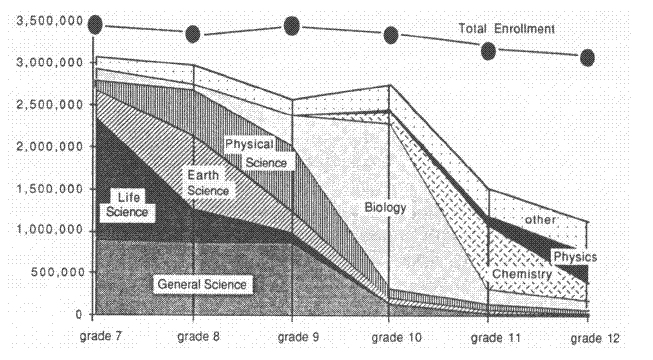Article contents
Science Teaching through its Astronomical Roots
Published online by Cambridge University Press: 12 April 2016
Extract
Project STAR (Science Teaching through its Astronomical Roots) emerged from growing concern about the decreasing enrollment in science classes, and lack of understanding of science and math concepts (Figure 1). Using astronomy as a focus, Project STAR is trying not simply to increase the enrollment in high school science courses, but also to improve the students’ understanding of science and its role in making sense of the world.

The educational approach of Project STAR is based on three principles:
• Mastery of a few ideas is more important for students than cursory exposure to many concepts.
• Students learn best through hands-on activities.
• Students enter the classroom with certain preconceptions, or “naive theories,” about how physical systems work, without a sense of whether their understandings are accurate (often they are not).
- Type
- 9. High-School Courses
- Information
- International Astronomical Union Colloquium , Volume 105: The Teaching of Astronomy , 1990 , pp. 257 - 276
- Copyright
- Copyright © Cambridge University Press 1990
References
- 1
- Cited by




